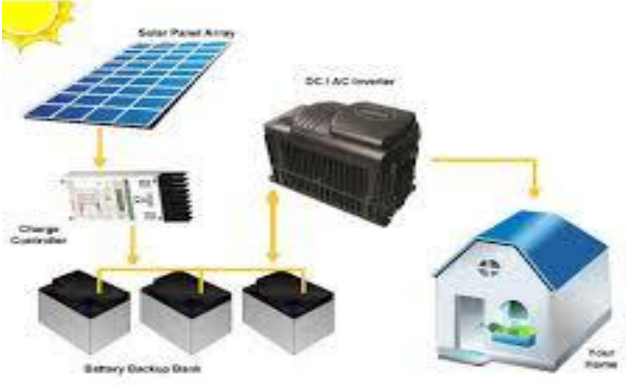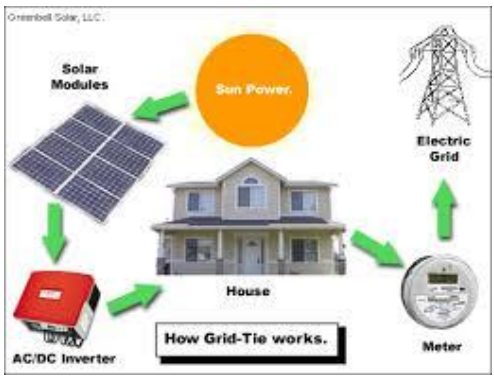With growing demand for PV systems, the utilities provided an option for the consumers to connect their systems to the grid. This step introduced a new term called “Net Metering.” Net metering allows the consumers to send back the electricity they generate from their PV systems to the grid. This is possible because of the grid-tied connection enabled by the utility. Similarly, we also have systems that are independent and do not require themselves to be connected to the grid such systems are called off-grid systems or standalone systems. Both the systems have been explained in detail below:
Standalone or Off-Grid Systems
The off-grid system term states the system not relating to the gird facility. Primarily, the system which is not connected to the main electrical grid is term as off-grid PV system (Weis, 2013). Off-grid system also called standalone system or mini grid which can generate the power and run the appliances by itself. Off-grid systems are suitable for the electrification of small community. Off-grid electrification system is viable for the remote areas in the countries where they do have little or no access to the electricity because of the distinct living and spread population in the vast area. The off-grid system refers to the support that would be adequate for a living without depending on the grid or other system. Electrical energy in the off-gird system produced through the Solar photovoltaic panels needs to be stored or saved because requirement from the load can be different from the solar generator with its solar panel output, battery bank is also used for the purpose generally.

This project is considering the viability of having an off-grid PV system which can be used to power a bus shelter. This concept can also be utilized on a larger scale to support all types of homes which are in remote areas and where the cost of connecting cables and other infrastructure of electricity to the house is expensive.
Integrated or Grid-Tied System
Grid connected photovoltaic power system is an electricity generating system which is linked to the utility gird (energy.gov, n.d.). This photovoltaic system contains solar panel, inverter and the equipment to provide connection to the grid. Grid connected systems are feasible for various setup such as residential. Commercial and larger scale grid tied system different than the off grid solar power systems. Usually grid connected system does not need battery backup, because when system generate the energy more than the load it will automatically transfer to the linked utility gird.

In the residential setups grid connected rooftop systems usually having the capability of 10 kilowatts which could be enough to meet the house requirements, and the excess would feed the grid which can be used by other consumers connected to the grid. The feedback or excess power transfer system works through a meter to track the transferred power. In some instances, PV system wattage could be less than the normal consumption due to several different factors and in this scenario, consumer will utilize the grid energy.
